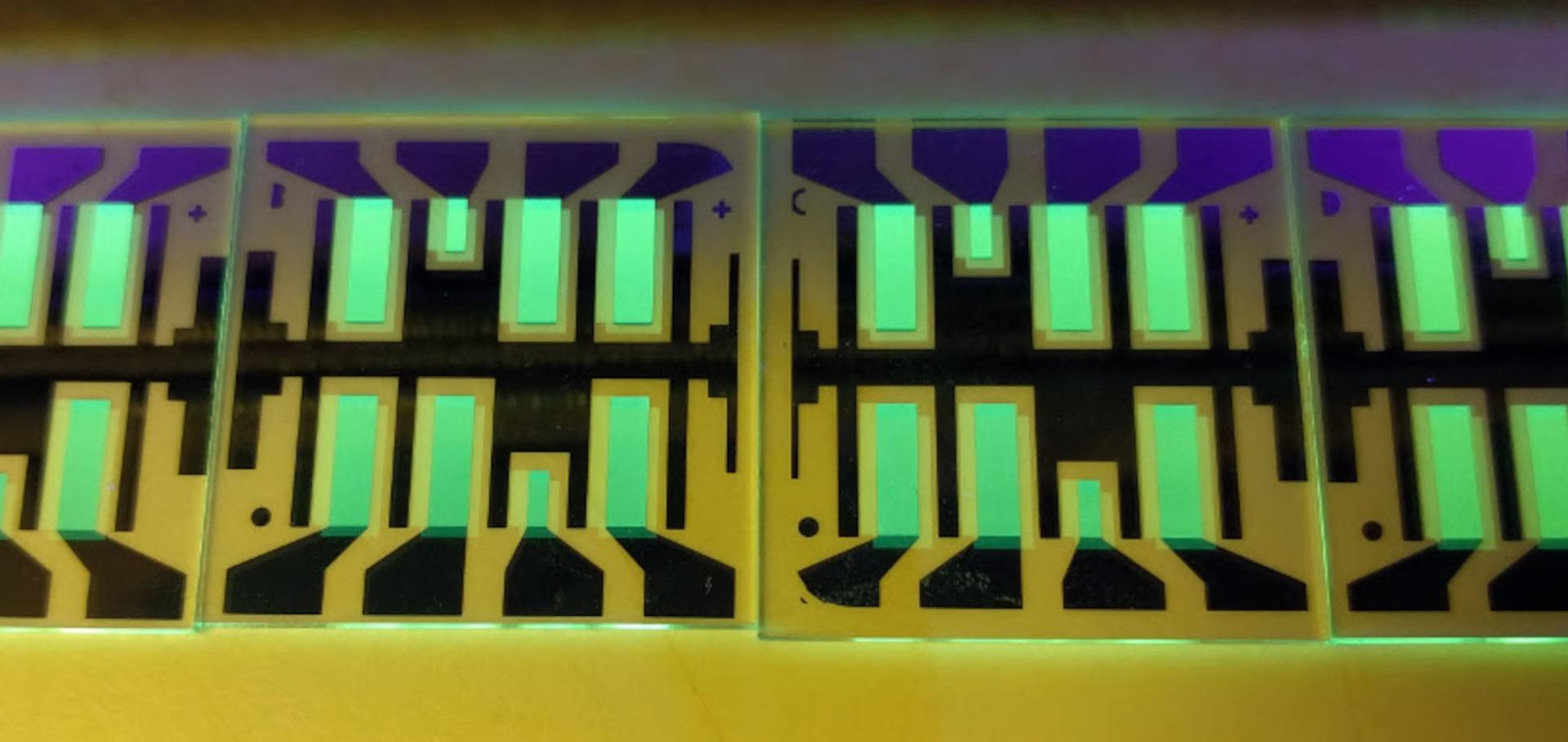The role of energy level matching in organic solar cells- Hexaazatriphenylene hexacarbonitrile as transparent electron transport material
Solar Energy Materials and Solar Cells 95:3 (2011) 927-932
Abstract:
We introduce the material hexaazatriphenylene hexacarbonitrile (HATCN) as electron conducting window layer for separating the photoactive region from the cathode in organic pin type solar cells. HATCN has a wide band gap of 3.3 eV and is thus transparent in the visible range of the solar spectrum. Its electrical properties can be tuned by means of molecular n-doping which leads to an increase of electron conductivity by several orders of magnitude up to 2.2×10-4S/cm. However, an application in photovoltaic devices is restrained by its exceptionally high electron affinity, estimated 4.8 eV, which introduces an electron injection barrier to the photoactive acceptor material C60. Here, we present a strategy to remove this barrier by means of introducing doped and undoped C60 intermediate layers, thus demonstrating the importance of energy level matching in a multiple layer structure and the advantages of Fermi level control by doping. © 2010 Elsevier B.V.All rights reserved.The influence of substrate heating on morphology and layer growth in C60 : ZnPc bulk heterojunction solar cells
Organic Electronics: physics, materials, applications 12:3 (2011) 435-441
Abstract:
The change of morphology in mixed layers due to different substrate temperature T of organic solar cells containing C60 and zinc phthalocyanine (ZnPc) is studied. Heating the substrate during deposition of the bulk heterojunction C60:ZnPc leads to a significant improvement of solar cell performance, mainly due to an increase in photocurrent and fill factor (FF). This is attributed to improved charge carrier percolation pathways within the C60:ZnPc blend. Using atomic force microscopy, scanning electron microscopy, transmission electron microscopy, organic field effect transistor, X-ray diffraction, and absorption measurements, we observe aggregation, cluster-like, and polycrystalline growth of the heated bulk layer. This provides better transport percolation paths by inducing a phase separation of the molecules. Heated blend layer with thickness of 60 nm shows high performance without loss in FF. When heating the substrate to the optimum temperature of 110 °C, a power conversion efficiency of 3.0% is achieved, compared to 1.4% for an identical device prepared on a substrate held at room temperature. © 2010 Elsevier B.V. All rights reserved.Imbalanced mobilities causing S-shaped IV curves in planar heterojunction organic solar cells
Applied Physics Letters 98:6 (2011)
Abstract:
We show that S-kinks in the current voltage characteristics, which decrease the fill factor significantly, can be caused by a strong imbalance of charge carrier mobilities (hole mobility in donor and electron mobility in acceptor) in planar/flat heterojunction organic solar cells. Electrical simulations according to a drift-diffusion model predict the occurrence of an S-kink for a mobility mismatch factor larger than 100. By combining a low-mobility donor material, (1,2,3,4,9,10,11,12-octaphenyl-diindeno [1,2,3-cd: 1′, 2′, 3′ -lm]perylene), with the acceptors C60 and N, N′ -dimethylperylene-3,4:9,10-dicarboximide, which show different electron mobilities, we experimentally verify the predictions. Our results demonstrate that not only interface effects but also the photoactive material itself can cause S-kinks. © 2011 American Institute of Physics.Tetrabutyl-tetraphenyl-diindenoperylene derivatives as alternative green donor in bulk heterojunction organic solar cells
Solar Energy Materials and Solar Cells 95:2 (2011) 630-635
Abstract:
We present the material 2,3,10,11-tetrabutyl-1,4,9,12-tetraphenyl- diindeno[1,2,3-cd:1′,2′,3′-lm] perylene (Bu4-Ph4-DIP) as alternative green donor for bulk heterojunction small molecule organic solar cells (SMOSC). It is shown that Bu4-Ph4-DIP exhibits suitable absorption characteristics to be a potential material to fill the absorption gap between the commonly used standard absorbers ZnPc and C60. Devices with bulk heterojunctions of Bu4-Ph4-DIP:C60 display very high open circuit voltages of 0.99 V, high fill factors of up to 57%, and experiments yield promising efficiencies of η>2%. Such green-blue absorbing SMOSC are characterized by current voltage and external quantum efficiency measurements, and material properties are studied. It is shown that the devices are responsive to substrate heating, and that different donoracceptor mixing ratios can increase device performance. Possible influences of mixing ratio and heating on device morphology and electrical properties are discussed.Photoelectron spectroscopy investigation of thin metal films employed as top contacts in transparent organic solar cells
Thin Solid Films 519:6 (2011) 1872-1875


